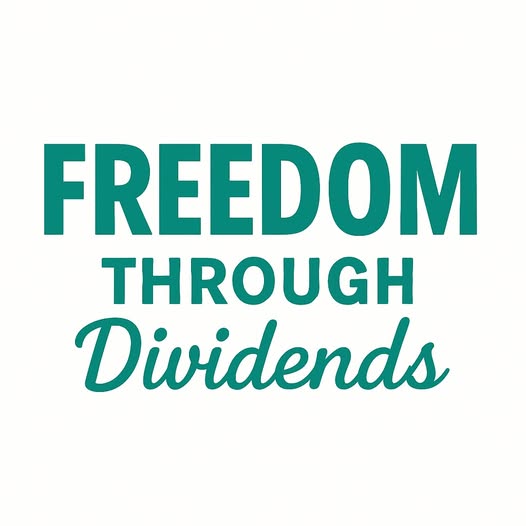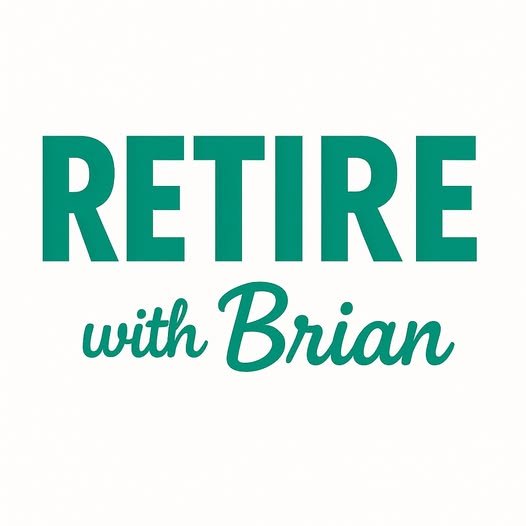Are you tired of watching your investments go up and down with the market? Do you want a consistent cash flow to help reach your financial goals?
You’re not alone. Many investors are now using a mix of dividend stocks and ETFs. This strategy can help you deal with market ups and downs and make your income more stable.
By mixing dividend stocks and ETFs in your portfolio, you can lower risk and possibly earn more over time. This investment strategy is made to help you invest smarter and get a steady cash flow.
Key Takeaways
- Combining dividend stocks and ETFs can help reduce investment risk.
- A hybrid investment strategy can provide a more predictable income stream.
- Diversification is key to achieving consistent cash flow.
- A well-diversified portfolio can help you navigate market volatility.
- Investing in dividend stocks and ETFs requires a long-term perspective.
The Power of Cash Flow Investing
Cash flow investing is a smart way to get financial stability. It focuses on making regular income. This helps build a strong financial base for your future goals.
Why Cash Flow Matters in Your Investment Strategy
Cash flow is key because it gives you steady income. This income helps you pay bills and invest more. It brings financial stability, lets you reinvest, and lessens your need for one income.
The Psychological Benefits of Regular Income
Getting regular income from investments boosts your mood. It’s especially helpful when the market is shaky. It lowers stress, boosts confidence, and makes you feel secure.
Adding cash flow investing to your plan makes your portfolio strong. It supports your financial dreams and might even give you passive income.
Understanding Dividend Stocks: Your Income Foundation
Dividend stocks are key to a strong income strategy. Knowing how they work is vital for a steady cash flow from your investments.
What Makes a Quality Dividend Stock
A top dividend stock pays dividends regularly. It shows it’s financially stable and cares about its shareholders. Companies with a long history of steady dividends are usually solid and financially strong.
Dividend Aristocrats vs. High-Yield Dividend Stocks
Dividend Aristocrats have raised their dividends for 25 years or more. They show they can keep giving back to shareholders. High-yield dividend stocks, however, offer more income but might be riskier.
Dividend Payout Ratios and Growth Rates
The dividend payout ratio shows how much of earnings go to dividends. A good ratio is under 60%. The growth rate of dividends is also key. It shows a company’s ability to raise dividends, helping investors keep up with inflation.
Learning about these aspects helps you choose better for your income portfolio.
ETFs Explained: Diversification Made Simple
ETFs are key for investors wanting steady cash flow. They are like a mix of stocks, bonds, or commodities all in one. This makes it easy to invest in many things with just one choice.
Types of ETFs for Income Investors
There are many ETFs for income seekers. Dividend ETFs focus on stocks that pay out regularly. Bond ETFs invest in bonds for a stable income. And sector-specific ETFs target industries known for their dividends.
Benefits of ETF Investing for Cash Flow
ETFs are great for steady cash flow. They offer instant diversification to lower risk. They are also cost-effective with lower fees than mutual funds. Plus, they are transparent, showing their holdings daily.
Expense Ratios and Their Impact on Returns
The expense ratio of an ETF is very important. It affects how much you keep from your investment. A lower ratio means more of your money stays with you, leading to better returns over time.
Invest Smarter: Combining Dividend Stocks and ETFs for Consistent Cash Flow

A mix of dividend stocks and ETFs in your portfolio can lead to a steady cash flow. This strategy combines the best of both worlds. It makes your investment strategy strong and reliable.
The Synergy Effect of a Combined Approach
Putting dividend stocks and ETFs together can boost your returns. Stocks give you a steady income, while ETFs spread out your risk. This mix makes your cash flow more stable.
For example, stocks like Johnson & Johnson or Procter & Gamble are known for their consistent dividends. They form a solid base for your income. On the other hand, ETFs like the Vanguard Dividend Appreciation ETF diversify by holding many dividend stocks.
Balancing Growth and Income Potential
Finding the right balance between growth and income is crucial. Dividend stocks offer steady income but might not grow as much as ETFs. ETFs, with their wide range of stocks, can offer more growth.
To find a balance, put some of your money in top dividend stocks for steady income. Also, invest in growth ETFs to explore new opportunities. As
“The stock market is filled with individuals who know the price of everything, but the value of nothing.”
– Philip Fisher reminds us to focus on value, not just price, when investing.
By spreading your investments across different types, you can get a steady cash flow and growth. This way, your portfolio is both stable and has a chance for long-term growth.
Building Your Cash Flow Portfolio: Step-by-Step
Creating a cash flow portfolio is a major goal for many investors. It’s about making money consistently. To do this, you need a solid investment plan that matches your financial dreams.
Determining Your Income Needs and Goals
The first step is to figure out how much money you need and what you want to achieve. You should look at your spending, understand how much risk you can handle, and set clear investment targets.
For example, do you want regular income for retirement or to grow your wealth? Your goals will shape your investment choices.
Asset Allocation Strategies for Income
Asset allocation is key in your investment plan. It means spreading your money across different types of investments to balance risk and reward.
A good mix might include dividend stocks, ETFs, bonds, and other income sources. The goal is to find a balance that fits your financial goals and risk level.
“Diversification is the only free lunch in investing.” –
Rebalancing for Optimal Performance
After setting up your portfolio, it’s crucial to check and adjust it regularly. This keeps it in line with your investment goals.
Rebalancing means tweaking your portfolio to keep the right mix of investments. This helps you get the best returns and manage risks well.
By following these steps and sticking to a disciplined investment plan, you can create a cash flow portfolio that meets your financial needs and supports your long-term goals.
Top Dividend Stocks to Consider for Your U.S. Portfolio
The U.S. stock market has many top dividend stocks to boost your portfolio’s income. It’s key to look at the company’s financial health, dividend history, and growth chances.
Blue-Chip Dividend Payers in the S&P500
Blue-chip dividend payers are big companies with a stable dividend history. Some examples are:
- Johnson & Johnson (JNJ)
- Procter & Gamble (PG)
- Coca-Cola (KO)
These companies are reliable and pay dividends consistently. They are great for investors looking for steady income.
Emerging Dividend Growth Opportunities
While blue-chip stocks are good, emerging dividend growth stocks offer more potential. Companies that raise their dividends over time are especially appealing. For example:
- Real estate investment trusts (REITs) like Simon Property Group (SPG)
- Telecom companies such as Verizon Communications (VZ)
These companies could give you both income and growth in your portfolio.
Sector Diversification for Dividend Stocks
Spreading your dividend stocks across different sectors can lower risk. Important sectors to look at include:
- Consumer staples
- Energy
- Healthcare
- Real estate
By investing in these sectors, you can make your income stream stronger. This helps protect against downturns in specific sectors.
Essential ETFs for Consistent Income
ETFs are key for steady income for investors. They help diversify your portfolio, reducing risk and boosting cash flow consistency.
Dividend-Focused ETFs for U.S. Investors
Dividend-focused ETFs track indexes of dividend-paying stocks. They offer a mix of income-generating stocks, perfect for those seeking regular income. Popular ones track the S&P 500 Dividend Aristocrats Index.
Key Benefits: Diversified portfolio, regular income, potential for dividend growth.
Bond ETFs for Stability and Predictable Income
Bond ETFs invest in bonds, providing steady income through interest. They diversify and can be less volatile than single bonds. You can pick from various bond ETFs, like government, corporate, or municipal bonds.
| ETF Type | Investment Focus | Income Potential |
|---|---|---|
| Government Bond ETFs | U.S. Treasury bonds | Stable, low-risk income |
| Corporate Bond ETFs | Corporate debt securities | Higher yield, moderate risk |
| Municipal Bond ETFs | Municipal debt securities | Tax-exempt income, moderate risk |
Specialty Income ETFs: REITs, MLPs, and Preferred Stocks
Specialty income ETFs focus on specific areas like REITs, MLPs, and preferred stocks. They offer a varied income stream and unique investment chances.
Adding these ETFs to your strategy can build a diversified income portfolio that meets your needs.
Tax Considerations for Your Income Portfolio

Tax efficiency is key to a successful income portfolio. It affects your investment choices and returns. Knowing the tax impact of your investments helps you make better decisions.
Tax-Efficient Placement of Investments
Placing investments wisely can lower your taxes. Put tax-efficient ones in taxable accounts. Move high-tax investments to tax-deferred accounts. This way, you can get more after-tax returns.
Utilizing Tax-Advantaged Accounts: 401(k)s, IRAs, and Roth Options
Using tax-advantaged accounts like 401(k)s, IRAs, and Roth IRAs can reduce your taxes. 401(k)s and traditional IRAs grow tax-free until you withdraw. Roth IRAs use after-tax money, so withdrawals are tax-free in retirement.
| Account Type | Tax Treatment | Withdrawal Rules |
|---|---|---|
| 401(k) | Tax-deferred | Taxed as ordinary income |
| Traditional IRA | Tax-deferred | Taxed as ordinary income |
| Roth IRA | Taxed upon contribution | Tax-free if certain conditions are met |
Qualified Dividend Income and Capital Gains Considerations
It’s important to know how qualified dividends and capital gains are taxed. Qualified dividends are taxed lower than regular income. Long-term capital gains are taxed lower than short-term gains. This shows the value of long-term investing.
By understanding these tax aspects, you can make your income portfolio more tax-efficient. This aligns with your financial goals.
Managing Risk in Your Income Portfolio
Building your income portfolio means managing risk to keep cash flowing. A smart risk management plan helps you deal with dividend stocks and ETFs. This protects your investments.
Identifying and Mitigating Dividend Cut Risks
Dividend cuts can hurt your income. To avoid this, watch the dividend payout ratio of your investments. A high ratio might mean a company can’t keep paying dividends.
Choose companies with a stable dividend history and strong finances.
ETF Underperformance: Warning Signs and Solutions
ETFs not doing well can worry income investors. To fix this, check the ETF’s holdings often. Make sure they match your investment goals.
Keep an eye on expense ratio changes or tracking errors. These signs might mean the ETF is not performing well.
Portfolio Diversification as a Risk Management Tool
Diversification is key for income investors. Spread your investments across different types, sectors, and places. This lowers your risk in any one investment.
Adding dividend stocks, ETFs, and other income sources makes your portfolio strong. It’s more likely to last long.
Managing risk well is a continuous job. You need to keep checking and tweaking your strategy. Stay updated and adjust to market changes. This way, your income portfolio can thrive over time.
Creating a Sustainable Withdrawal Strategy for Passive Income
A good withdrawal plan is key to enjoying steady passive income. As you grow your wealth with dividend stocks and ETFs, it’s important to withdraw your earnings wisely. This way, you keep your investment safe.
The 4% Rule and Its Alternatives for Financial Planning
The 4% rule is a common guide for retirement withdrawals. It suggests taking 4% of your portfolio in the first year and adjusting for inflation each year. This can last 30 years. But, it might not work for everyone, especially in shaky markets.
There are other ways to plan your withdrawals. For example, you could take more when the market does well and less when it doesn’t. This method helps keep your portfolio strong for longer.
Adjusting Your Strategy Through Different Life Stages
Your withdrawal plan should change as you age and your financial needs shift. In your early retirement, you might spend more on travel or hobbies. Later, you might need to save more for health costs.
Key considerations for adjusting your withdrawal strategy include:
- Assessing your income needs at different life stages
- Adjusting for inflation to maintain purchasing power
- Rebalancing your portfolio to manage risk
By regularly checking and tweaking your withdrawal plan, you can keep your passive income supporting your lifestyle all through retirement.
Conclusion
You now know how mixing dividend stocks and ETFs can boost your cash flow and improve your investment plan. This method helps spread out your investments, lowers risk, and might raise your earnings. It’s key to keep your eyes on the future and check your investment plan often to make sure it fits your goals.
Having a solid investment plan is vital for financial stability and safety. Adding dividend stocks and ETFs to your mix can give you a steady income. This income can help you through market ups and downs and reach your financial goals. Keep investing wisely by focusing on steady cash flow and adjusting your plan as needed.
FAQ
What are the benefits of combining dividend stocks and ETFs in my investment portfolio?
Combining dividend stocks and ETFs can offer a steady cash flow. It also helps spread out risk and balances growth with income. This makes it a smart investment choice.
How do I determine the right asset allocation for my income needs?
To find the right mix, think about your financial goals and how much risk you can take. Also, consider how much income you need. Then, split your investments between dividend stocks and ETFs to meet your goals.
What are the tax implications of investing in dividend stocks and ETFs?
Dividend stocks and ETFs are taxed differently. Qualified dividend income gets a lower tax rate. But, ETFs might have capital gains taxes. Use tax-advantaged accounts and think about tax-efficient placement to cut down on taxes.
How can I manage risk in my income portfolio?
To manage risk, spread your investments across different types, sectors, and places. Keep an eye on dividend payout ratios and ETF performance. Also, rebalance your portfolio often to keep a good balance of risk and return.
What is a sustainable withdrawal strategy for passive income?
A sustainable strategy is about finding a safe withdrawal rate, like the 4% rule. Adjust it based on your financial situation, life stage, and market conditions. This way, you can have a steady income without using up all your money.
How often should I rebalance my income portfolio?
Rebalance your portfolio every 6-12 months, or when it’s way off from your target. This keeps your risk and return in balance and ensures a steady income.
Can I use ETFs to gain exposure to specific sectors or industries for income generation?
Yes, you can use specialty income ETFs for targeted exposure. For example, those focused on REITs, MLPs, or preferred stocks. This helps diversify your income streams and reach your financial goals.

